The small town of Otavalo in Ecuador has a surprise in store for visitors: This unassuming outpost in the Andes is home to the largest market in all of South America. Famous worldwide for the textiles and handmade artisanal products, there is enough here to lose yourself for hours amongst the small stalls.
While the market is a must on any self-respecting Ecuador itinerary, there are plenty more things to do in this culture-rich town. The people here are still very much in touch with their indigenous roots. Read on to learn about their history and traditions.
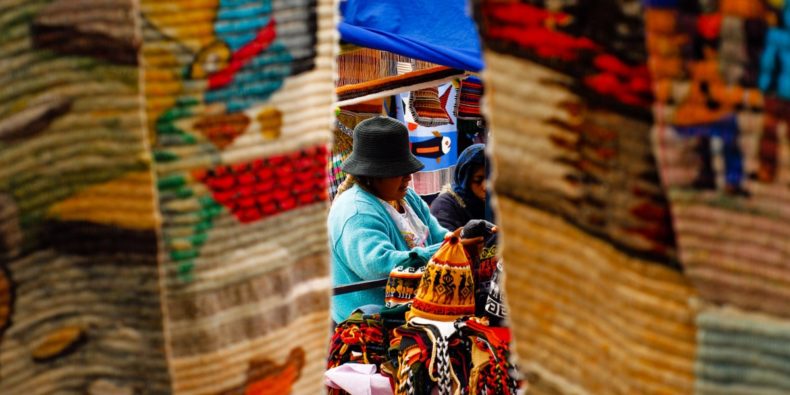
The market is a hustle and bustle of lively action. Day in, day out there is plenty to see, and of course, plenty to buy! Everything from dreamcatchers, hand-painted plates and traditional nut jewelry, to indigenous costumes, fake shrunken heads and every spice you could imagine. Of course, the main event, the showstopper, what you’re all here to see, is the textiles. The fabrics in this town have an enormously long history, dating back to pre-Inca times. You can find the Otavaleños (the people of Otavalo) in many corners of the world, selling their wares. They’re famous for it!
While it’s the Otavaleños who are textile famous, they are not the only group of people selling things here. In fact, they make up only 50% of the town’s population. You will also find Kichwa Peoples, Afro-Ecuadorians, Mestizos and several different variations of the Kichwa language amongst the stalls! Kichwa is the Inca language of Ecuador, and many different variations of it is spoken throughout the country, particularly in the Andean regions. Take the time to learn a few words! It might help you land a cheaper price in the market if you communicate in their mother tongue.
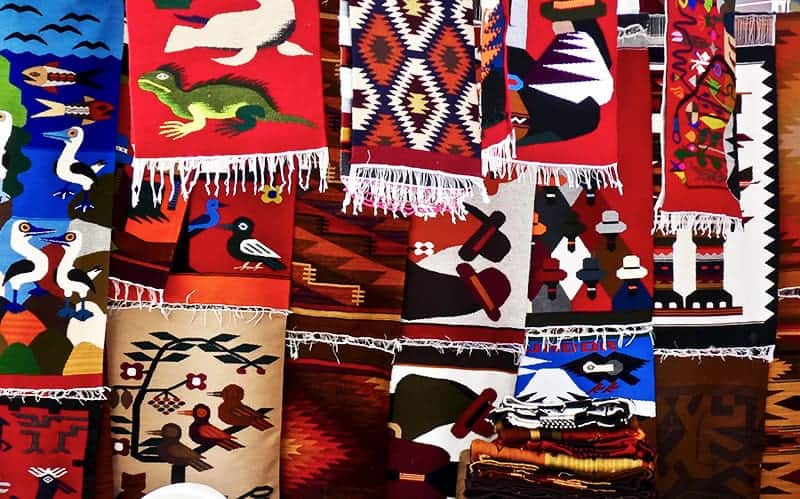
As Otavalo is famous for its markets, so too, the surrounding towns are famous for their goods. If you don’t want to leave the town, then there is an animal market that runs on Saturdays from 6am until noon. With every farm animal imaginable, rabbits, guinea pigs and plenty more for sale, this is an animal lover’s paradise.
Head to Cotacachi and explore the center of Ecuador’s leather industry. You will find everything leather here, and most of the goods are made in the back of the shop. Leather Jacket, yes, leather trousers, of course. Leather shirt? Button up baby, we’ve got it here.
In San Antonio there is a wonderful world of carved wood to discover, with picture frames, bed posts, and other furniture of all varieties. The craftsmanship is simply stunning. Take a look and allow yourself to be blown away by the handiwork.
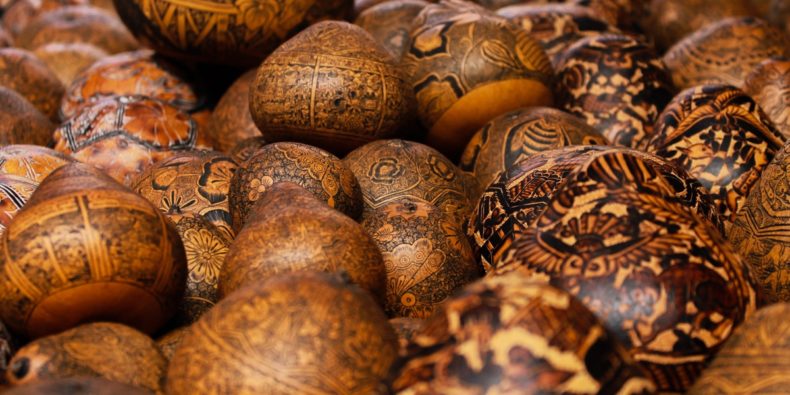
The official ‘market days’ of Otavalo Market are Wednesday and Saturday. On these days the market runs from 7 am until 6 pm. Get there early to avoid the crowds. If you want to experience the full rush of the place then these are the days to go, judge your timings accordingly. However, there are some sellers and stalls there all week long. With less of a rush, you are more likely to be able to take your time and chat with the sellers. This is more likely to bring you a better price. Always be sure to look after your belongings, at every tourist spot there is a potential for theft and pickpocketing.
The town of Otavalo is at a lower elevation than Quito, at 2,543 meters above sea level, versus Quito’s 2,850 meters. Because of the lower elevation, altitude sickness should not be a problem if you have already acclimatized in Quito. Ensure that you are wearing sunscreen and a sunhat, even if it doesn’t feel hot. The average temperature here is 15°, this is consistent all year round due to how close the town is to the equator; the sun’s rays are very strong.
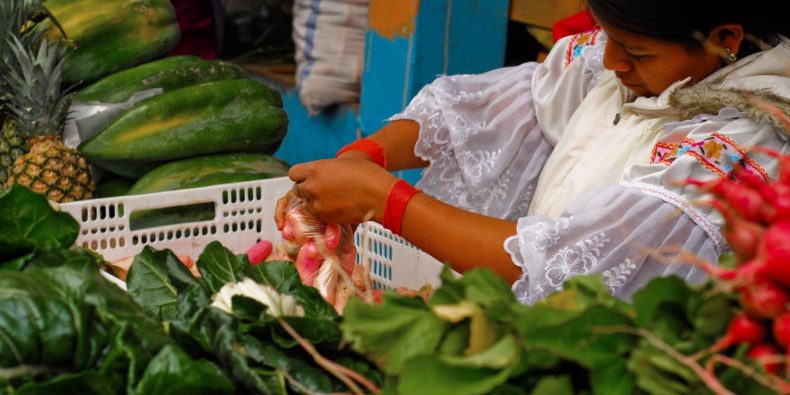
The best way to get to Otavalo Market is from Quito. Taking around 2 hours from the Carcelén bus station and costing $2.50, it is a great day trip from the capital city. At a distance of roughly 100km, a taxi isn’t really worthwhile. Buses run multiple times of the day, every day from Carcelén bus station. From there, take a bus to Cooperative Otavalo, or to Cooperative Los Lagos. Once in the town of Otavalo, a taxi will cost you $1.25 to almost anywhere.
The town of Otavalo has many rich traditions and a huge amount of history. The customs of the town are intricate and the celebrations are sacred. Everything from marriage to the day of the dead is celebrated. There is even a festival once a year specifically to cleanse the air from bad or unwanted spirits.
Otavalo also has a rich indigenous music scene, with musicians traveling worldwide to showcase their art at different festivals and events. The town also plays a major part in the indigenous festival called Inti Raymi. This takes place every year in order to celebrate the summer solstice. The musicians play music and the people dance.
The Otavalo people’s history is as storied and complex as their garments. They were incorporated by force alongside the Inca empire, providing them with textiles. When the Spanish came, their labor then began to profit the Spanish. Their superior skills in weaving led the Spanish to create workshops for the people of Otavalo. The conditions of these workshops were hard and the labor was intensive. Despite this, the textiles industry in Otavalo remained active after the Spanish left and continues to bloom to this day.
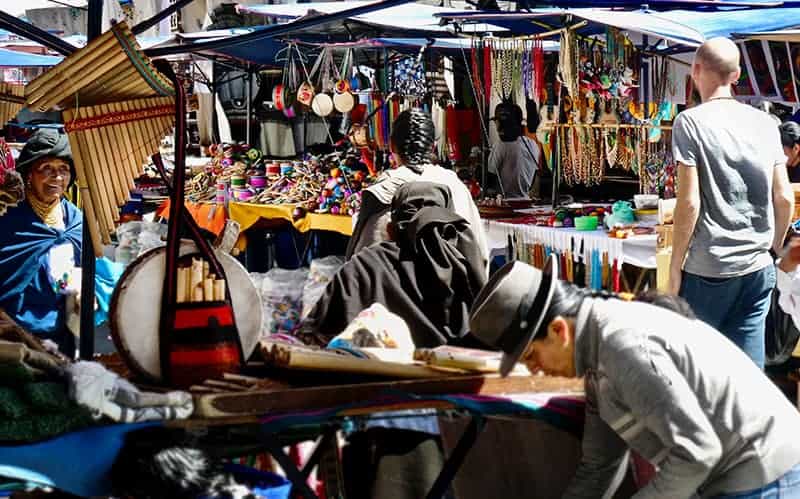
After colonial times, the people of Otavalo reclaimed one of the textile factories that was previously used during the colonial era. These days it is a living museum to show the fabrics are made. It is highly recommended to visit the Museo Vivente Otavalango in order to understand the effort required to make these intricate pieces and the history behind textile production in Otavalo.
The Peguche Waterfall is also worth a visit to help you understand the lives of the indigenous people. A major part of the Summer Solstice celebrations takes place at the falls. People come from all over to bathe in the waterfall, which is said to have healing properties. It’s said that if a person bathes in the lower waterfall wearing just their underwear, they will be cleaned of bad luck and illness. If a person bathes naked in the upper waterfall, their soul is cleansed.
If this doesn’t satisfy your water kick, then Lagos de Mojanda is a great stop for you. An enormous lake inside an inactive volcano, just 20 minutes taxi from the town. Take a hike around it or up to one of the mountains close by. Alternatively, take a kayak or speed boat out onto the water, provided by the locals for just a couple of dollars. Of the three different lakes of the volcano, you will find zorbing and jet skiing as well.
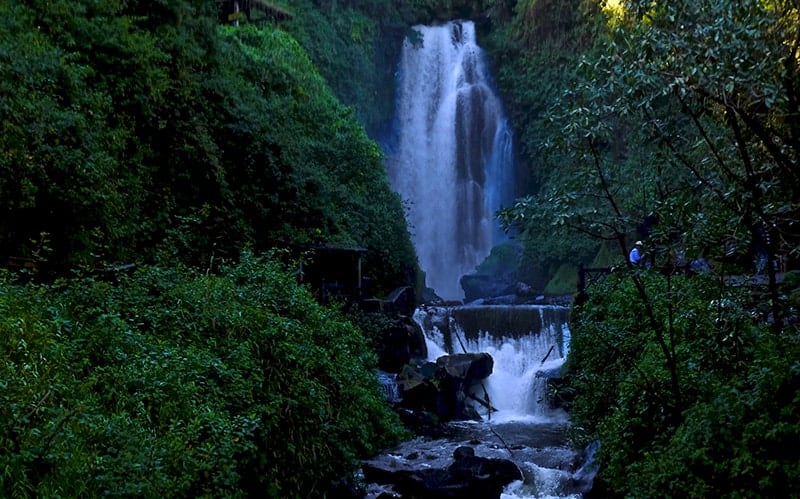
There are plenty of other hikes and activities to be found around the town: go abseiling, canyoning or even head off into the countryside on horseback. You can also take the time to get to know the music more or enjoy some of the traditional food, freshly cooked in the market.
Otavalo has much to offer visitors, beyond the famous Otavalo Market. The market is a must-see stop while in Ecuador, but don’t miss out on some of the other unique experiences that this incredible town has to offer. Immerse yourself in the distinct Andean culture of the town and celebrate the cultures and traditions of these marvelous people.